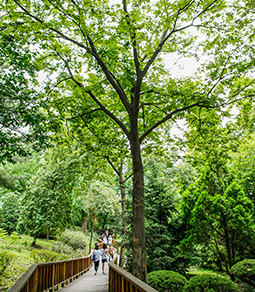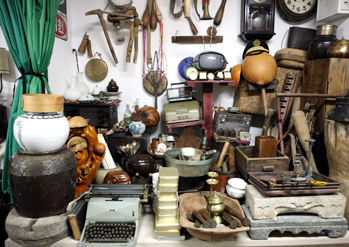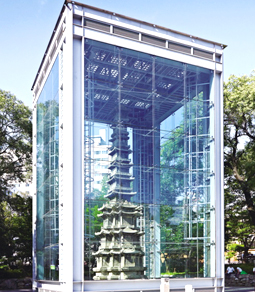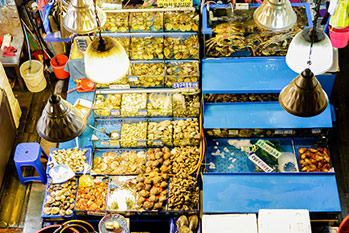- Line 1
- Line 2
- Line 3
- Line 4
- Line 5
- Line 6
- Line 7
- Line 8
- Line 9
- Suin-Bundang
- Shinbundang
- Gyeongui Jungang
Major Attractions on Line 1
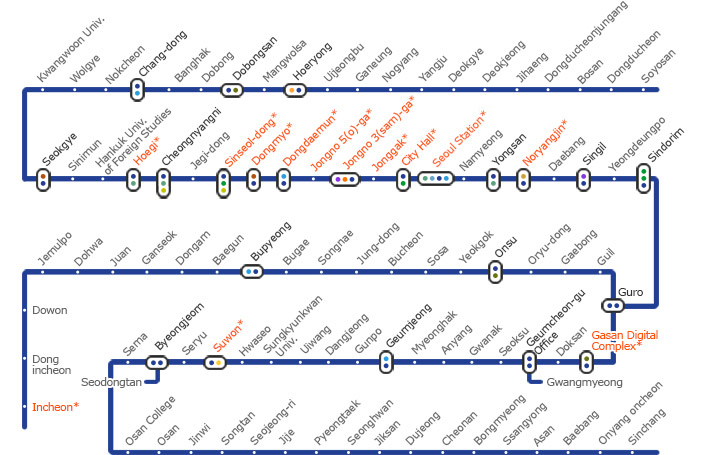
-

- Hongneung Arboretum
-
1GJG Hoegi
1GJGCheongnyangni
6Korea University
-
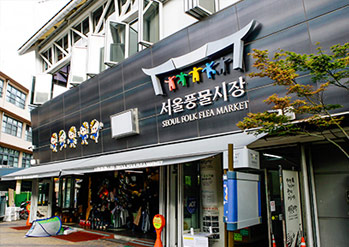
- Seoul Folk Flea Market
-
12UISinseol-dong
-
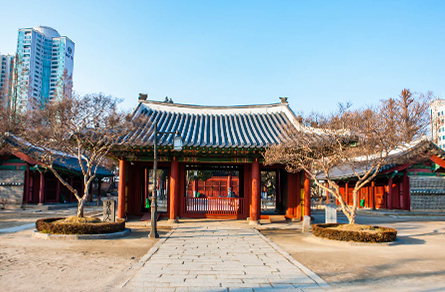
- Dongmyo Flea Market
-
16Dongmyo
-
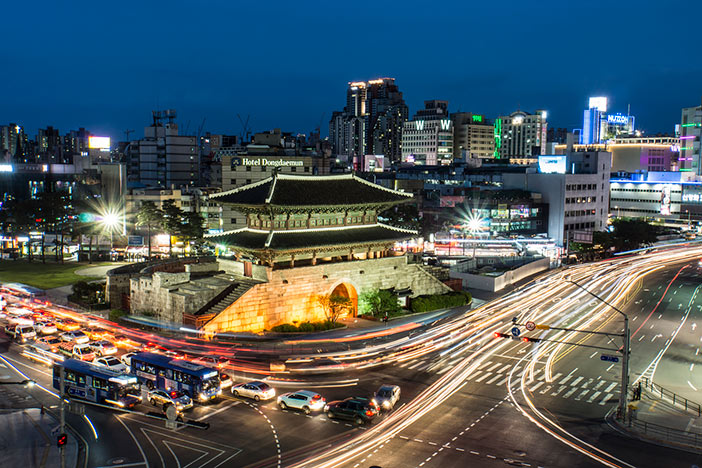
- Heunginjimun Gate
-
14Dongdaemun
-
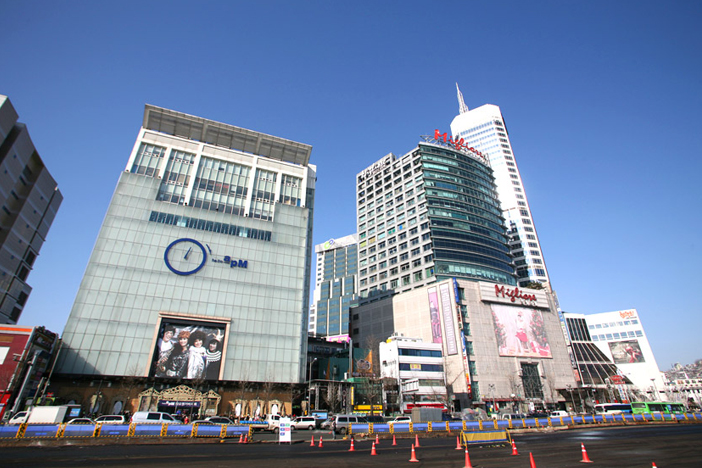
- Dongdaemun Fashion Town
-
14Dongdaemun
245Dongdaemun History & Culture Park
-
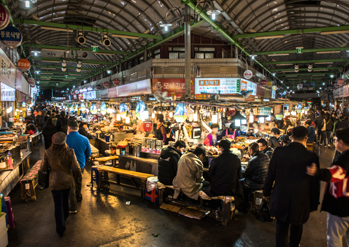
- Gwangjang Market
-
1Jongno 5(o)-ga
25Eulji-ro 4(sa)-ga Station
-
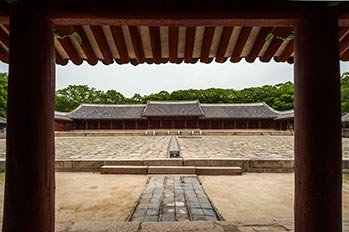
- Jongmyo Shrine
-
135Jongno 3(sam)-ga
-
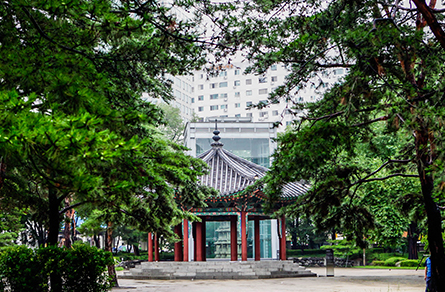
- Tapgol Park
-
135Jongno 3(sam)-ga
1Jonggak Station
-
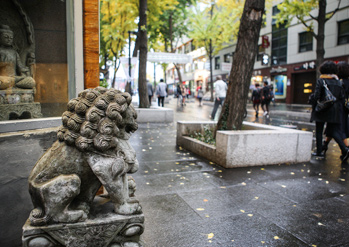
- Insa-dong
-
135Jongno 3(sam)-ga
3Anguk Station
-

- Cheonggyecheon Stream
-
1Jonggak
2Euljiro 1(il)-ga
5Gwanghwamun
-
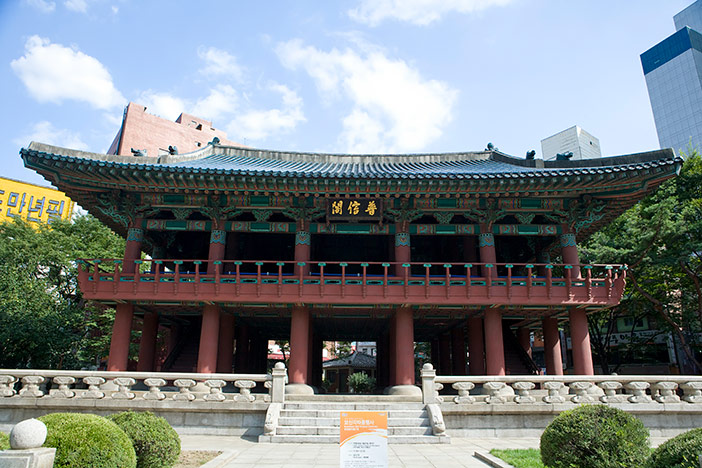
- Bosingak Belfry
-
1Jonggak
-
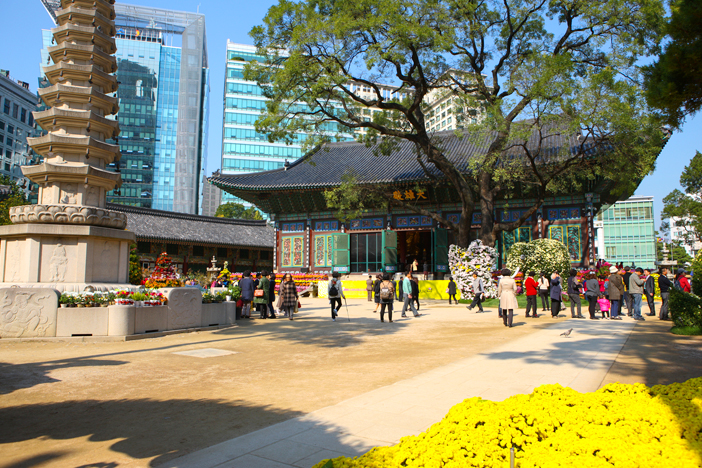
- Jogyesa Temple
-
1Jonggak
3Anguk
-
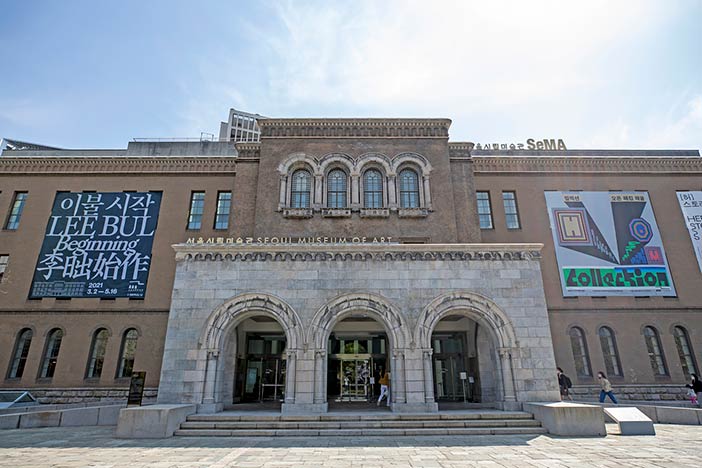
- Seoul Museum of Art
-
12City Hall
-
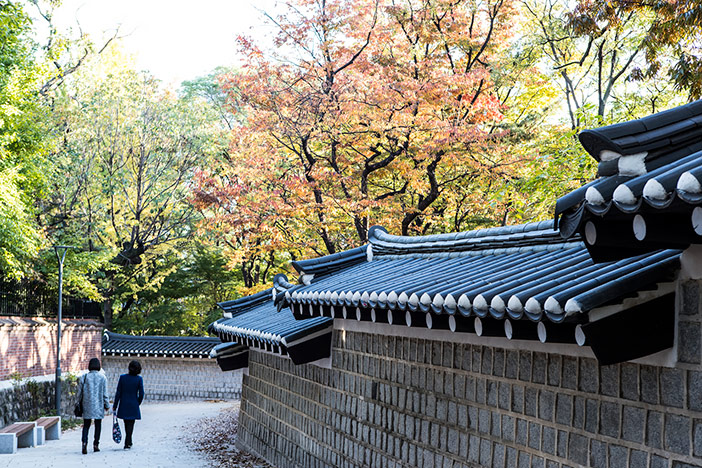
- Deoksugung Palace & Deok...
-
12City Hall
-
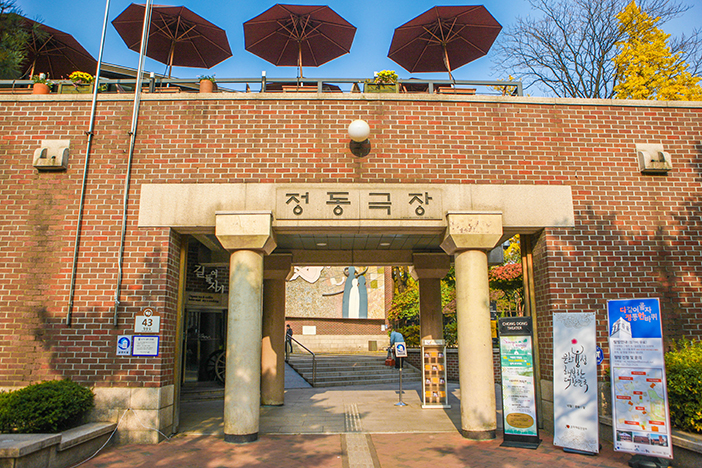
- Jeongdong Theater
-
12City Hall
-
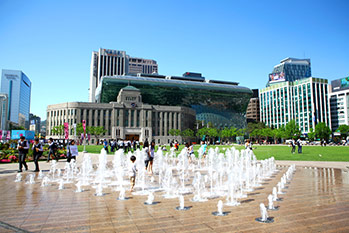
- City Hall (Seoul Plaza)
-
12City Hall
2Euljiro 1(il)-ga
5Gwanghwamun
-
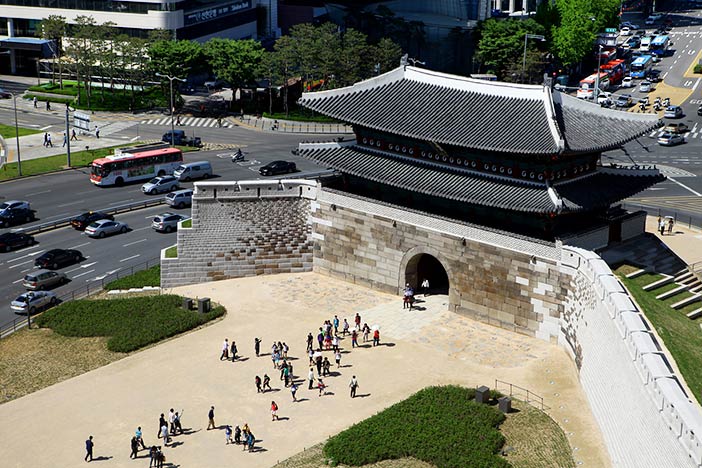
- Sungnyemun Gate (Namdaemun...
-
14ASeoul
4Hoehyeon Station
-
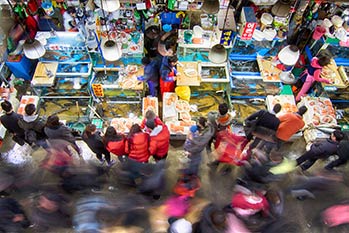
- Noryangjin Fisheries Whole...
-
19Noryangjin
-
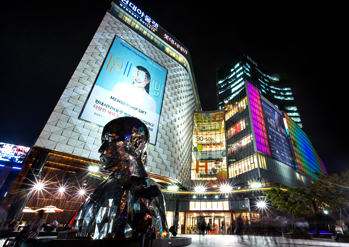
- Gasan Digital Complex Shop...
-
17Gasan Digital Complex
-
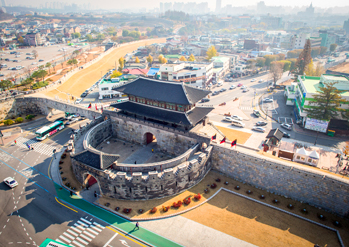
- Hwaseong Fortress
-
1BSuwon
1Hwaseo
-
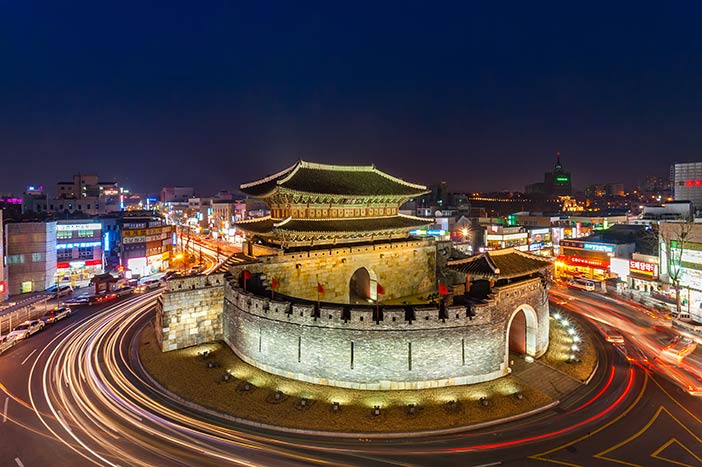
- Paldalmun Gate
-
1BSuwon
-
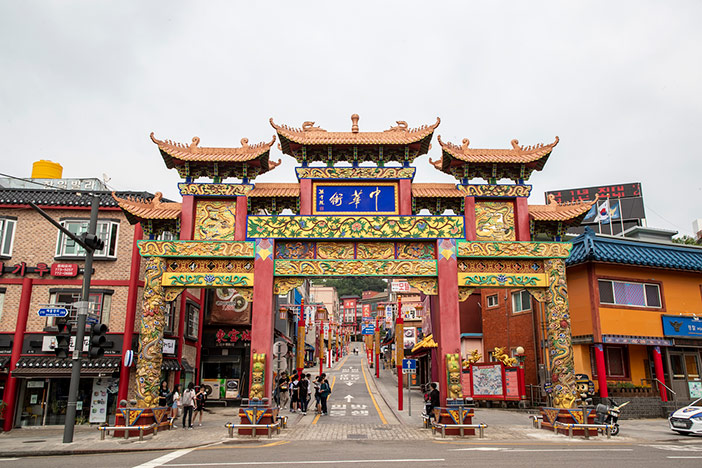
- Incheon Chinatown
-
1Incheon
-
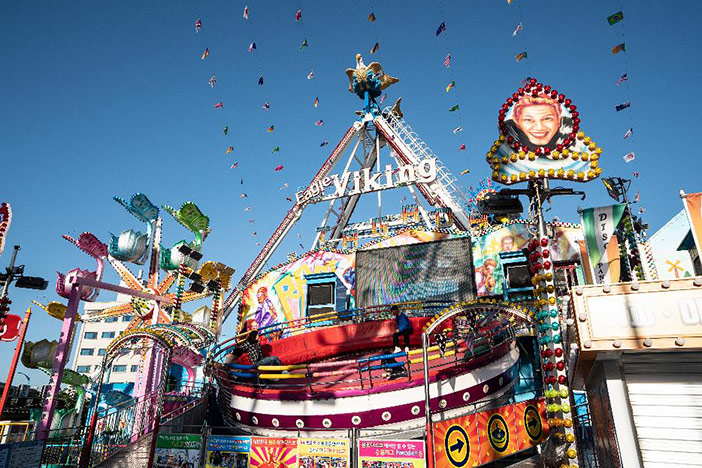
- Wolmido Island
-
1Incheon
* Some attractions subject to closure or limited entrance due to COVID-19. Please check before visiting.
Korea Tour by Seoul Subway Line 1
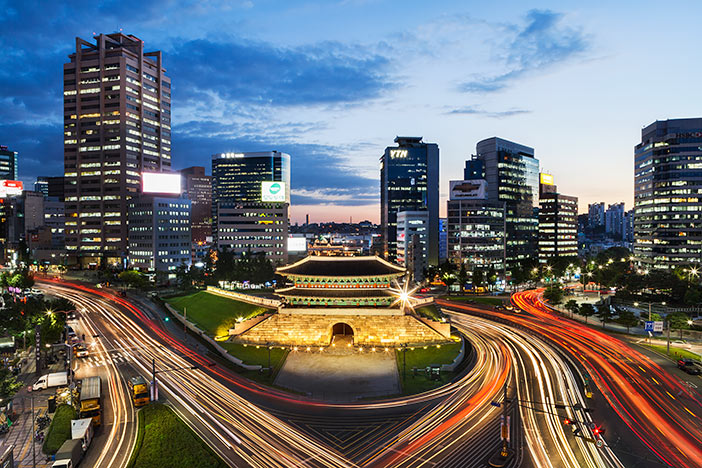 【 Photo: Sungnyemun Gate 】
【 Photo: Sungnyemun Gate 】 Seoul Subway Line 1 runs from Uijeongbu and Dong-Ducheon in the north to Suwon, Cheonan and areas of Chungcheongnam-do in the south. Not only does the route itself have a long history, the line also passes through downtown Seoul and many historically significant attractions as well as shopping centers.
Hongneung Arboretum
1GJGHoegi Station
1GJGSCheongnyangni Station
6Korea University Station
Hoegi Station, Exit 1, approx. 15-min by bus (No. 273) or 10-min by taxi
Located 1.45 kilometers west of Hoegi Station is Hongneung Arboretum, built on the Hongneung burial site, the royal tomb of Queen Myeongseong. Although it is a research-centered arboretum managed by the Korea Forest Services, it is open to the public free of charge, except Mondays, May 1st and public holidays when it is closed.
Seoul Folk Flea Market
12UISinseol-dong Station
Sinseol-dong Station, Exit 6, approx. 5-min walk
Seoul Folk Flea Market first originated from the flea market in Hwanghak-dong, where many street shops and vendors gathered around Cheonggyecheon Stream. Seoul Folk Flea Market mainly offers electronics and household items, selling antiques on the first floor while leisure sports items and regional specialties can be found on the second floor. The market is closed on Tuesdays.
Dongmyo Flea Market
16Dongmyo Station
 【 Photo: Dongmyo Shrine 】
【 Photo: Dongmyo Shrine 】 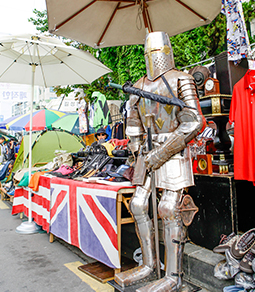 【 Photo: Dongmyo Flea Market 】
【 Photo: Dongmyo Flea Market 】
Dongmyo Station, Exit 3, approx. 2-min walk
Dongmyo Flea Market gained popularity among the younger generation after famous Korean celebrities are known to have shopped here. Tourists can also get a taste of unique shopping experience at a relatively low cost. With just 10,000 won, you can buy interesting secondhand items including books, snacks and other vintage items.
Dongdaemun Gate (Heunginjimun Gate)
14Dongdaemun Station
 【 Photo: Heunginjimun Gate 】
【 Photo: Heunginjimun Gate 】Dongdaemun Station, Exit 6, approx. 3-min walk
Heunginjimun Gate, designated as a Treasure, is the easternmost gate among the eight city gates in Seoul. This two-story building with an arched stone gate at its center features elements of architectural style from the late Joseon dynasty. One of the special features of this gate is the presence of ongseong, an outer fortress built for double protection of the gate, a characteristic not found in other gates of Seoul.
Dongdaemun Fashion Town
14Dongdaemun Station
245Dongdaemun History & Culture Park Station
 【 Photo: Dongdaemun Fashion Town 】
【 Photo: Dongdaemun Fashion Town 】Dongdaemun Station, Exit 7, approx. 5-min walk
The Dongdaemun Fashion Town Special Tourist Zone consists of both wholesale and retail shops. From Pyeonghwa Fashion Town and a variety of shopping complexes to Dongdaemun Design Plaza (DDP), this is an area with a wide assortment of shopping options.
Gwangjang Market
1Jongno 5(o)-ga Station
25Eulji-ro 4(sa)-ga Station
 【 Photo: Gwangjang Market interior 】
【 Photo: Gwangjang Market interior 】  【 Photo: Food at Gwangjang Market 】
【 Photo: Food at Gwangjang Market 】
Jongno 5(o)-ga Station, Exit 8, approx. 5-min walk
Formed in 1905, Gwangjang Market is Korea’s oldest market established by private retailers. Imported goods can mostly be found on the second and third floors while bindaetteok (mung bean pancake), gimbap, yukhoe (beef tartare) and many other delicious street foods are notably found on the first floor of the market. Although it is a traditional market, Gwangjang Market is one of the most popular attractions in the Jongno area among the local youth and international tourists.
Jongmyo Shrine
135Jongno 3(sam)-ga Station
 【 Photo: Jongmyo Shrine’s Jeongjeon Hall 】
【 Photo: Jongmyo Shrine’s Jeongjeon Hall 】 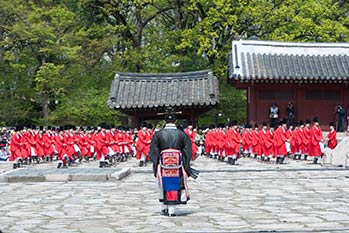 【 Photo: Jongmyo Jerye 】
【 Photo: Jongmyo Jerye 】
Jongno 3(sam)-ga Station, Exit 11, approx. 5-min walk
* 2021 Jongmyodaeje (Royal Ancestral Memorial Rite of Joseon) will be held in private without guests
The primary place of worship throughout the Joseon dynasty and where the ancestral tablets of Joseon's kings and queens are kept, Jongmyo Shrine is Seoul’s representative UNESCO World Heritage. In particular, Jongmyodaeje (Royal Ancestral Memorial Rite of Joseon) ceremony, a UNESCO designated Intangible Cultural Heritage of Humanity, is held at Jongmyo Shrine every May. International visitors can make an online reservation for commentary guides in English, Chinese and Japanese.
Tapgol Park
135Jongno 3(sam)-ga Station
1Jonggak Station
Jongno 3(sam)-ga Station, Exit 1, approx. 5-min walk
Emblemized as the first city park to be built in Seoul, Tapgol Park was constructed in 1897 at the former site of Wongaksa Temple. The park is of great historical value and national spirit as it was the starting point of the Independence Protest on March 1, 1919. Another attraction of the park is the 12-meter high Ten-story Stone Pagoda of Wongaksa Temple, a National Treasure, built in 1465.
Insa-dong
135Jongno 3(sam)-ga Station
3Anguk Station
 【 Photo: Insa-dong streets 】
【 Photo: Insa-dong streets 】 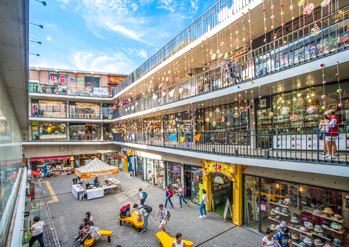 【 Photo: Ssamziegil 】
【 Photo: Ssamziegil 】
Jongno 3(sam)-ga Station, Exit 1, approx. 10-min walk
One of Seoul’s representative tourist attractions is none other than the traditional streets of Insa-dong. Many shops selling books, antiques and traditional products can be found here. Visitors can also experience traditional art culture as several art galleries and museums renovated from hanok (traditional Korean house) can be found as well as the popular art street, Ssamzie-gil Road.
Cheonggyecheon Stream
1Jonggak Station
2Euljiro 1(il)-ga Station
5Gwanghwamun Station
 【 Photo: Cheonggyecheon Stream 】
【 Photo: Cheonggyecheon Stream 】Jonggak Station, Exit 5, approx. 5-min walk
Cheonggyecheon Stream stretches a total of 10.84 kilometers from Jongno-gu to Jung-gu. A total of 22 bridges are built over the stream along with a number of graceful fountains that add to the ambience of the area.
Bosingak Belfry
1Jonggak Station
 【 Photo: Bosingak Belfry 】
【 Photo: Bosingak Belfry 】Jonggak Station, Exit 9, approx. 2-min walk
* Bosingak Bell-Ringing Ceremony canceled due to COVID-19
Bosingak Belfry was used during the Joseon Dynasty to notify time. Since 1985, a special ceremony has been taking place at Bosingak Belfry to ring in the New Year, where the bell is rung 33 times in front of large crowds. Bosingak Bell-Ringing Ceremony program is available every day except Mondays at 11:40 on the second floor for visitors who wish to experience bell ringing. Take note that the bell ringing ceremony on Tuesdays is limited to international visitors only.
Jogyesa Temple
1Jonggak Station
3Anguk Station
 【 Photo: Jogyesa Temple 】
【 Photo: Jogyesa Temple 】Jonggak Station, Exit 2, approx. 10-min walk
Jogyesa Temple is the center of Korean Buddhism that was established in 1910. Jogyesa Temple offers Templestay program as well as an opportunity to learn more about Korean Buddhism at the Memorial Museum of History and Culture of Korean Buddhism located within the temple grounds.
Seoul Museum of Art
12City Hall Station
 【 Photo: Seoul Museum of Art 】
【 Photo: Seoul Museum of Art 】City Hall Station, Exit 1, approx. 5-min walk
Jeongdong-gil Road is a representative cultural street in Seoul. Conveniently located at the center of the street is the Seoul Museum of Art (SeMA), a Korean modern art museum where visitors can appreciate the combination of modern architecture and art. Formerly the Supreme Court building, SeMA moved into the location in 2002. The old façade was preserved, while the building was renovated into a three-story building with six exhibition halls, a lecture hall for educational programs, and a library with a collection of 3,500 pieces of art by famous artists. An outdoor sculpture garden is also available, serving as a good promenade for a pleasant stroll.
Deoksugung Palace & Deoksugung Stone-wall Road
12City Hall Station
 【 Photo: Deoksugung Stone-wall Road 】
【 Photo: Deoksugung Stone-wall Road 】City Hall Station, Exit 1, approx. 5-min walk
* Deoksugung Palace viewing and tours limited to visitors that have been vaccinated
Originally called Gyeongungung Palace, Deoksugung Palace is one of the five royal palaces from the Joseon dynasty. Visitors can get a glimpse of the royal culture by watching the Deoksugung Palace Royal Guard-Changing Ceremony and other reenactments. The stone-wall road along Deoksugung Palace leading to Jeongdong Theater from Daehanmun Gate is also a famous attraction.
Jeongdong Theater
12City Hall Station
5Seodaemun Station
 【 Photo: Jeongdong Theater 】
【 Photo: Jeongdong Theater 】City Hall Station, Exit 1, approx. 10-min walk
Opened in 1995, Jeongdong Theater is historically significant in that it represents the restored Wongaksa, the first modern theater in Korea from 1908. The theater offers famous performances, including pansori and a series of traditional musicals created by Jeongdong Theater. Several performances provide subtitles in English, Chinese and Japanese.
Seoul Plaza
12City Hall Station
2Euljiro 1(il)-ga Station
5Gwanghwamun Station
 【 Photo: Seoul Plaza 】
【 Photo: Seoul Plaza 】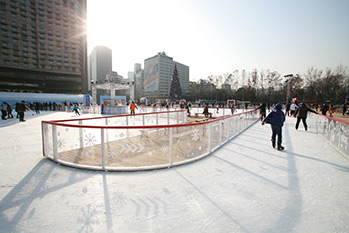 【 Photo: Seoul Plaza Ice Skating Rink 】
【 Photo: Seoul Plaza Ice Skating Rink 】
City Hall Station, Exit 5, approx. 2-min walk
Seoul Plaza, located in front of Seoul City Hall, is a place loved by both local residents and international tourists. It is where the historic March 1st Movement and June Democratic Movement took place and where tens of thousands of Korean soccer fans gathered to cheer during the 2002 FIFA World Cup Games. Seoul Plaza is used as a venue for various events and cultural festivals. During winter, it transforms into the outdoor Seoul Plaza Ice Skating Rink. Visitors can also easily access Seoul Metropolitan Library and the Seoul Citizens Hall from the plaza.
Sungnyemun Gate
14ASeoul Station
4Hoehyeon Station
 【 Photo: Sungnyemun Gate 】
【 Photo: Sungnyemun Gate 】Seoul Station, Exit 4, approx. 5-min walk
Also referred to as Namdaemun Gate, Sungnyemun Gate is designated as a National Treasure. It is the longest-standing stone structure in the city, and boasts a beauty achieved by balance and moderation. A plaza is built around the Sungnyemun Gate where visitors can get a close feel of the gate’s majesty.
Noryangjin Fisheries Wholesale Market
19Noryangjin Station
Noryangjin Station, Exit 1, approx. 15-min walk
If you want to smell the sea in downtown Seoul, pay a visit to Noryangjin. With a wide variety of marine products available, the Noryangjin Fisheries Wholesale Market is one of the largest seafood markets in Korea. Visitors can freely look around as well as shop and try fresh seafood. Visitors can also take their purchased seafood to one of the restaurants inside the market to have the ingredients cooked and served at a reasonable price. Open all year round, the market offers an authentic marketplace feel with bustling patrons every day.
Gasan Digital Complex Shopping Outlet
17Gasan Digital Complex Station
Gasan Digital Complex Station, Exit 1, approx. 10-min walk
Gasan Digital Complex is the name given to the industrial complex near the old Garibong-dong neighborhood. However, the area is popular as a shopping haven rather than an industrial complex among the youth. Mega outlets in the area have created a fashion district, luring in young people from all over the country. Above all, visitors will find many brand shop products sold at a very low price, making the area even more attractive and worth a visit.
Hwaseong Fortress
1BSuwon Station
1Hwaseo Station
 【 Photo: Suwon Hwaseong Fortress 】
【 Photo: Suwon Hwaseong Fortress 】  【 Photo: Hwaseong Fortress Tourist Trolley (Credit: Suwon-si) 】
【 Photo: Hwaseong Fortress Tourist Trolley (Credit: Suwon-si) 】
Suwon Station, Exit 4, approx. 20-min by bus (No. 66, 66-4) or 10-min by taxi
Hwaseong Fortress is an impressive and representative structure of the Joseon dynasty that is designated as a UNESCO World Heritage Site. The Hwaseong Fortress Tourist Trolley circulates around major tourist attractions spread throughout Suwon, taking passengers from Yeonmudae Post to Paldalsan Mountain, Temporary Palace at Hwaseong Fortress, Nammun Traditional Market, Suwon Hwaseong Museum, and then back to Yeonmudae Post. In spring, royal azaleas bloom along the walkway between Changnyongmun Gate and Paldalmun Gate. In addition, the Suwon Hwaseong Cultural Festival is held every October here.
Paldalmun Gate
1BSuwon Station
 【 Photo: Night view of Paldalmun Gate 】
【 Photo: Night view of Paldalmun Gate 】Suwon Station, Exit 4, approx. 15-min by bus (No. 11, 13) or 10-min by taxi
Paldalmun Gate is the southern gate of Hwaseong Fortress. A semi-circular wall called ongseong is built on the gate’s exterior. Unlike most ongseong walls built during that time, Hwaseong Fortress’ ongseong has its entrance at the center rather than at the wall’s corner end. Paldalmun Gate was able to survive the Korean War with minimal damage, preserving its original condition.
Incheon Chinatown
1Incheon Station
 【 Photo: Incheon Chinatown 】
【 Photo: Incheon Chinatown 】Incheon Station, Exit 1, approx. 3-min
Incheon Chinatown was formed by Chinese immigrants who settled in the area after the opening of the Incheon Port in 1883. The streets are lined with top-quality Chinese restaurants and bakeries. The Samgukji Mural Street, depicting scenes from China’s Three Kingdoms, and Jajangmyeon Museum, a special museum renovated from a Chinese restaurant built in 1908, are significant attractions found within the area. If time allows, stop by the Historical & Cultural Town located in the vicinity to learn more about the history and culture of Incheon China Town.
Wolmido Island
1Incheon Station
 【 Photo: Disco Pang Pang on Wolmido Island (Credit: Incheon Tourism Organization) 】
【 Photo: Disco Pang Pang on Wolmido Island (Credit: Incheon Tourism Organization) 】Incheon Station, Exit 1, approx. 15-min by bus (No. 23, 45) or 5-min by taxi
Wolmi Traditional Park, cruises, culture streets, cafes, restaurants and great sea views make Wolmido Island the perfect place for a pleasant walk or a retreat from the city. It also has popular amusement parks such as Wolmi Theme Park and My Land.
This page was last updated on November 9, 2021, and therefore information may differ from what is presented here.

